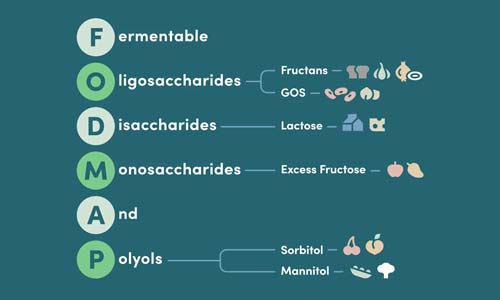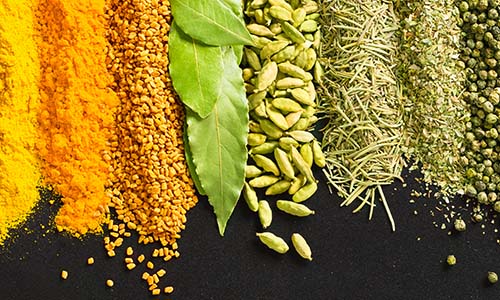Pineapple FODMAP Facts: Low FODMAP Living Made Easy

Key Takeaways
- Pineapple offers tropical sweetness suitable for a low FODMAP diet when consumed within serving limits.
- The fruit contains balanced sugars that typically do not cause excess fructose reactions.
- Understanding pineapple's FODMAP content helps prevent digestive discomfort like bloating.
- Pineapple is a reliable choice for those seeking flavorful options on a gut-sensitive diet.
Table of Contents
- Pineapple and FODMAPs, Quick Answers for Curious Cooks
- What Are FODMAPs (and Why Should Pineapple Lovers Care)?
- The FODMAP Content of Pineapple, Form, Serving Size, and Science
- Pineapple vs. Other Fruits on the Low FODMAP Diet, A Flavorful Comparison
- The Nutritional & Digestive Benefits of Pineapple (Beyond Low FODMAP)
- How to Choose & Use Pineapple the Gourmet (and Gut-Friendly) Way
- Incorporating Pineapple into Low FODMAP Meals, Recipes & Real-World Ideas
- Smart Shopping & Label Scanning, Avoiding Hidden FODMAPs
- Troubleshooting: When Pineapple Doesn't Sit Right
- Essential Resources for Confident Low FODMAP Living
Pineapple & FODMAPs, Your Flavorful Path to Low FODMAP Living
Pineapple brings tropical sweetness to your low FODMAP diet, when you know the serving limits. This golden fruit contains balanced sugars that won't trigger excess fructose reactions, making it a reliable choice for digestive comfort. Understanding pineapple fodmap content helps you enjoy bold flavors without the bloating that derails so many gut-sensitive food lovers.
The key lies in portion control and choosing the right form. Fresh pineapple offers the most generous serving size, while processed versions require stricter limits. We'll guide you through the science-backed details that transform pineapple from a dietary question mark into a confident kitchen staple. For more inspiration, explore these low FODMAP recipes that make the most of pineapple and other gut-friendly ingredients.
Pineapple and FODMAPs, Quick Answers for Curious Cooks
What Are FODMAPs (and Why Should Pineapple Lovers Care)?

FODMAPs are short-chain carbohydrates that ferment rapidly in sensitive digestive systems, causing gas, bloating, and abdominal discomfort. The acronym covers five sugar groups: Fermentable Oligosaccharides, Disaccharides, Monosaccharides, And Polyols.
Pineapple's sugar profile falls into the monosaccharide category, specifically the fructose component. Unlike high-fructose fruits such as mango or apple, pineapple contains roughly equal amounts of glucose and fructose. This balance allows your small intestine to absorb fructose efficiently, preventing the bacterial fermentation that triggers IBS symptoms.
The low FODMAP diet helps identify personal trigger foods through systematic elimination and reintroduction. For the estimated 10-15% of people managing IBS, understanding pineapple fodmap content means keeping tropical flavors on the table while supporting digestive wellness.
The FODMAP Content of Pineapple, Form, Serving Size, and Science
Processing dramatically alters pineapple's FODMAP load by concentrating sugars and removing water content. Fresh pineapple offers the most generous serving size because its natural water content dilutes the sugar concentration per gram.
Fresh pineapple (140g limit): Contains approximately 9g total sugars with balanced glucose-to-fructose ratios. The high water content, about 86%, keeps FODMAP density low.
Canned in juice (90g limit): Pineapple juice adds extra fructose, requiring portion reduction. Choose varieties packed in pineapple juice rather than added fruit juices to minimize FODMAP load.
Canned in syrup (65g limit): Added corn syrup or sugar concentrates fructose content significantly. The manufacturing process also removes fiber that would normally slow sugar absorption.
Dried pineapple concentrates all sugars into a much smaller volume, what was once 140g of fresh fruit becomes roughly 20g dried, but with identical sugar content. This concentration overwhelms the glucose-fructose balance that makes fresh pineapple digestible.
Measure portions using a kitchen scale for accuracy, or use visual cues: 140g fresh pineapple equals roughly one cupped palm or a standard measuring cup of chunks.
Pineapple vs. Other Fruits on the Low FODMAP Diet, A Flavorful Comparison
Pineapple ranks among the more generous low fodmap fruits for serving size, offering tropical flavor without the strict limits of stone fruits or berries.
| Fruit | Low FODMAP Serving | Primary Sugar Type | Best Use |
|---|---|---|---|
| Pineapple | 140g (1 cup) | Balanced glucose/fructose | Tropical dishes, snacking |
| Banana (unripe) | 100g (1 medium) | Starch, low sugar | Smoothies, baking |
| Blueberries | 40g (⅓ cup) | Balanced sugars | Breakfast, desserts |
| Orange | 130g (1 medium) | Sucrose dominant | Citrus flavor, vitamin C |
| Strawberries | 65g (5 medium) | Balanced sugars | Light sweetness, color |
Pineapple's generous serving size makes it ideal for fruit salads and main dish applications where you need substantial tropical flavor. Banana fodmap content varies dramatically by ripeness, unripe bananas offer more starch and less problematic sugars, while overripe bananas concentrate fructose.
Blueberries fodmap limits are much stricter at just ⅓ cup, making pineapple the better choice when you need volume for recipes. However, blueberries provide antioxidant density that pineapple can't match in equivalent servings.
For gourmet applications, pineapple's acidity and sweetness balance beautifully with savory proteins, while berries excel in delicate dessert work where intense flavor concentration matters more than quantity. For a delicious main course idea, try this low FODMAP miso salmon recipe that pairs well with a pineapple salsa.
The Nutritional & Digestive Benefits of Pineapple (Beyond Low FODMAP)

A 140g serving of fresh pineapple delivers 79mg vitamin C (88% daily value), 0.9mg manganese (40% daily value), and significant B6 for nervous system support. The high water content, 86% by weight, supports hydration while providing natural sweetness without overwhelming your digestive system.
Bromelain, pineapple's signature enzyme, breaks down proteins and may support comfortable digestion when consumed with meals. While research on bromelain's specific IBS benefits remains limited, many Gourmend customers report that pineapple's natural enzymes complement their low FODMAP meal planning effectively.
The soluble fiber in fresh pineapple, about 1.4g per serving, supports gentle regularity without the fermentation issues of high-FODMAP fiber sources. However, exceeding recommended portions can reverse this benefit, as excess fructose draws water into the intestines and speeds transit time uncomfortably.
Pair pineapple with protein or healthy fats to slow sugar absorption and extend satiety. Try fresh pineapple chunks with almond butter, or add measured portions to protein smoothies with spinach and Gourmend shelf-stable broth for unexpected savory-sweet depth.
How to Choose & Use Pineapple the Gourmet (and Gut-Friendly) Way
Select fresh pineapple by smell, ripe fruit releases sweet aroma from the stem end without fermented or alcoholic notes. The exterior should yield slightly to pressure while maintaining firm structure. Avoid pineapples with dark spots, wrinkled skin, or overly soft areas that indicate overripeness and concentrated sugars.
For canned options, read labels meticulously. Choose "packed in pineapple juice" over "packed in juice" to avoid apple or grape juice additions that increase FODMAP load. Avoid "heavy syrup" versions entirely during elimination phases, the added corn syrup concentrates fructose beyond safe limits.
Preparation steps for FODMAP compliance:
- Weigh portions using a kitchen scale for accuracy
- Core fresh pineapple completely, the fibrous center concentrates sugars
- Store cut pineapple in airtight containers for maximum 3 days
- Rinse canned pineapple to remove excess juice or syrup
When dining out, ask specific questions about fruit salad ingredients and preparation methods. Restaurant "fresh" fruit salads often include high-FODMAP fruits like apple or pear that cross-contaminate safe options. Request plain pineapple chunks when possible, and estimate portions conservatively.
If you accidentally exceed your portion limit, monitor symptoms for 24-48 hours. Drink plenty of water, avoid other FODMAP sources temporarily, and consider digestive enzymes if your healthcare provider recommends them. Most mild reactions resolve within 1-2 days with careful eating.
Incorporating Pineapple into Low FODMAP Meals, Recipes & Real-World Ideas
Pineapple's natural acidity and sweetness enhance both sweet and savory applications. The fruit's enzyme content tenderizes proteins naturally, making it perfect for marinades and slow-cooked dishes that won't spike your pineapple fodmap intake.
Breakfast applications: Add measured pineapple chunks to overnight oats with cinnamon and lactose-free milk. Blend into smoothies with 140g fresh pineapple, spinach, and coconut milk for a tropical start that won't trigger digestive distress.
Lunch and dinner pairings: Dice pineapple into grain bowls with quinoa, grilled chicken, and cucumber. The natural sweetness balances savory elements while staying within safe FODMAP limits. For a gourmet twist, simmer rice in Gourmend shelf-stable broth carton with measured pineapple chunks, the broth's chive and leek green notes complement pineapple's tropical profile without high-FODMAP aromatics.
Snack solutions: Pre-portion 140g servings in containers for grab-and-go convenience. Pair with a small handful of macadamia nuts or a slice of aged cheddar to slow sugar absorption and extend satiety. For another easy meal idea, check out this ultimate low FODMAP frittata recipe.
Pro Tip: When cooking with lentils or chickpeas, limit to ⅓ cup cooked per serving and balance with pineapple's natural sweetness. This combination delivers protein and fiber while respecting FODMAP boundaries.
Smart Shopping & Label Scanning, Avoiding Hidden FODMAPs

Navigating grocery aisles requires strategic label reading to maintain your pineapple fodmap compliance. Canned varieties pose the biggest challenge due to processing variations and added ingredients.
Safe label indicators:
- "Packed in 100% pineapple juice" or "no added sugar"
- Ingredient lists showing only pineapple and juice
- Organic certifications often indicate cleaner processing
Red flags to avoid:
- Heavy syrup or corn syrup additions
- Artificial sweeteners like sorbitol or mannitol
- Mixed fruit combinations that may include high-FODMAP fruits
Hidden pineapple sources: Salsas, yogurt parfaits, and energy bars frequently contain concentrated pineapple that exceeds safe serving sizes. Always check ingredient order, items listed first indicate higher concentrations.
Quick-check answer: Pineapple flavoring and natural pineapple extract typically don't contain significant FODMAPs, but verify with manufacturers if you're highly sensitive during elimination phases.
For a comprehensive list of high and low FODMAP foods, refer to this Monash University resource for up-to-date guidance.
Troubleshooting: When Pineapple Doesn't Sit Right
Individual tolerance varies even within established FODMAP guidelines. Some people experience symptoms despite consuming "safe" portions due to gut motility differences, timing of consumption, or co-ingested foods.
Common reaction signs:
- Bloating within 2-4 hours of eating
- Gas or abdominal cramping
- Changes in bowel movement patterns
- Feeling overly full or uncomfortable
Immediate action plan: Log the exact amount consumed, timing, and what else you ate. Reduce portion sizes by half for your next attempt. Wait 2-3 days between testing to allow symptoms to clear completely.
| Alternative Fruit | FODMAP Status | Safe Serving | Flavor Profile |
|---|---|---|---|
| Cantaloupe | Low FODMAP | 120g (¾ cup) | Sweet, mild |
| Strawberries | Low FODMAP | 140g (1 cup) | Sweet-tart |
| Kiwi | Low FODMAP | 140g (2 medium) | Tropical, tangy |
| Orange | Low FODMAP | 130g (1 medium) | Citrusy, bright |
Reintroduction strategy: During the reintroduction phase, test pineapple in graduated amounts over three days: 70g, 140g, then 200g. This systematic approach helps identify your personal threshold while maintaining symptom tracking accuracy. For more on FODMAPs and digestive health, see this peer-reviewed overview of the low FODMAP diet.
Essential Resources for Confident Low FODMAP Living
Building sustainable pineapple fodmap habits requires reliable tools and expert guidance. These resources provide science-backed information for long-term success.
Primary research tools:
- Monash University FODMAP Diet App: Gold standard for portion verification and new food testing
- Gourmend Foods recipe conversion tool: Transform favorite recipes into low FODMAP versions while maintaining gourmet flavor profiles. Try our recipe conversion tool for easy swaps.
- Certified FODMAP dietitians: Personalized guidance for complex cases or reintroduction challenges
Practical application steps:
- Download the Monash app and bookmark frequently eaten fruits
- Track your symptoms and food intake to identify patterns
- Use Gourmend’s recipe conversion tool to adapt your favorite dishes
Frequently Asked Questions
What makes pineapple a suitable fruit for a low FODMAP diet compared to other high-fructose fruits?
Pineapple contains a balanced amount of glucose and fructose, which helps your small intestine absorb fructose efficiently. This balance reduces the risk of excess fructose reaching the gut bacteria, making pineapple less likely to cause digestive discomfort compared to high-fructose fruits like mango or apple.
How do different forms of pineapple, such as fresh, canned, or dried, affect its FODMAP content and serving size recommendations?
Fresh pineapple offers the most generous low FODMAP serving size due to its natural sugar balance and water content. Canned or dried pineapple tends to be more concentrated in sugars, requiring smaller portions to stay within low FODMAP limits. Choosing the right form helps you enjoy pineapple without overloading on fermentable sugars.
Why is portion control important when consuming pineapple on a low FODMAP diet, and what are the suggested serving limits?
Portion control ensures you stay within the low FODMAP threshold, preventing excess fructose from triggering digestive symptoms like bloating. Generally, a serving of about 1 cup (140 grams) of fresh pineapple is considered low FODMAP, while canned or dried forms require smaller amounts. Sticking to these limits keeps pineapple a flavorful and gut-friendly choice.
What should I do if pineapple causes digestive discomfort despite being considered low FODMAP?
If pineapple still causes discomfort, try reducing your portion size or avoid it temporarily while monitoring symptoms. Consider other factors like meal combinations or individual sensitivity. Consulting resources like low FODMAP recipes and guides can help you find alternatives that suit your digestion better.





